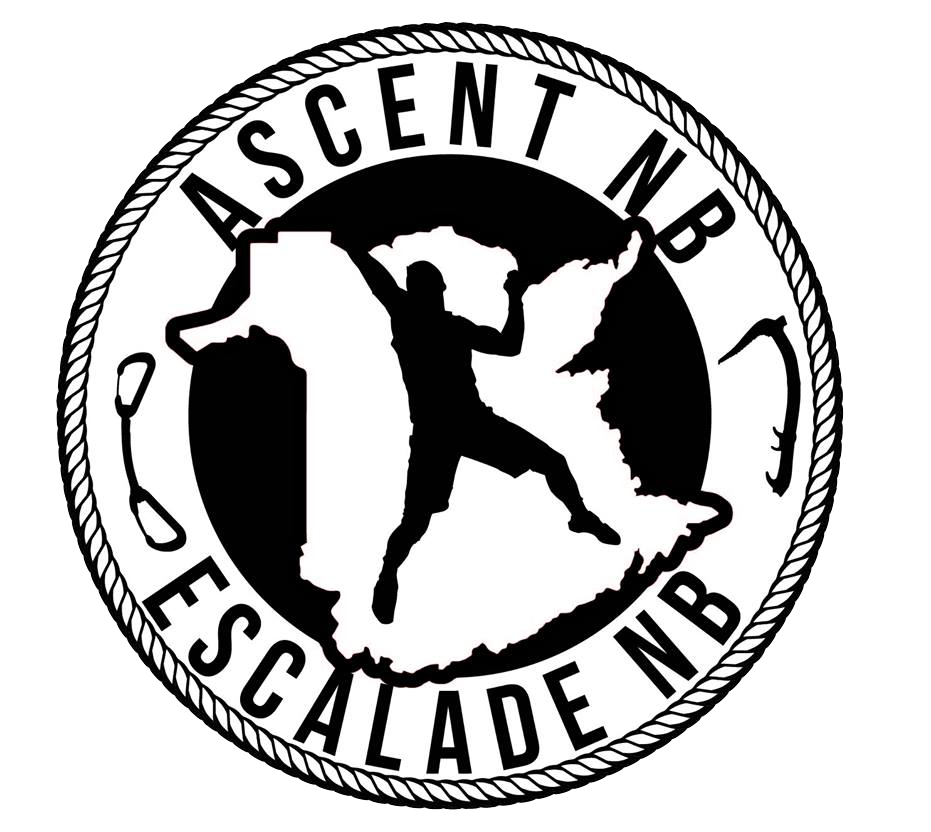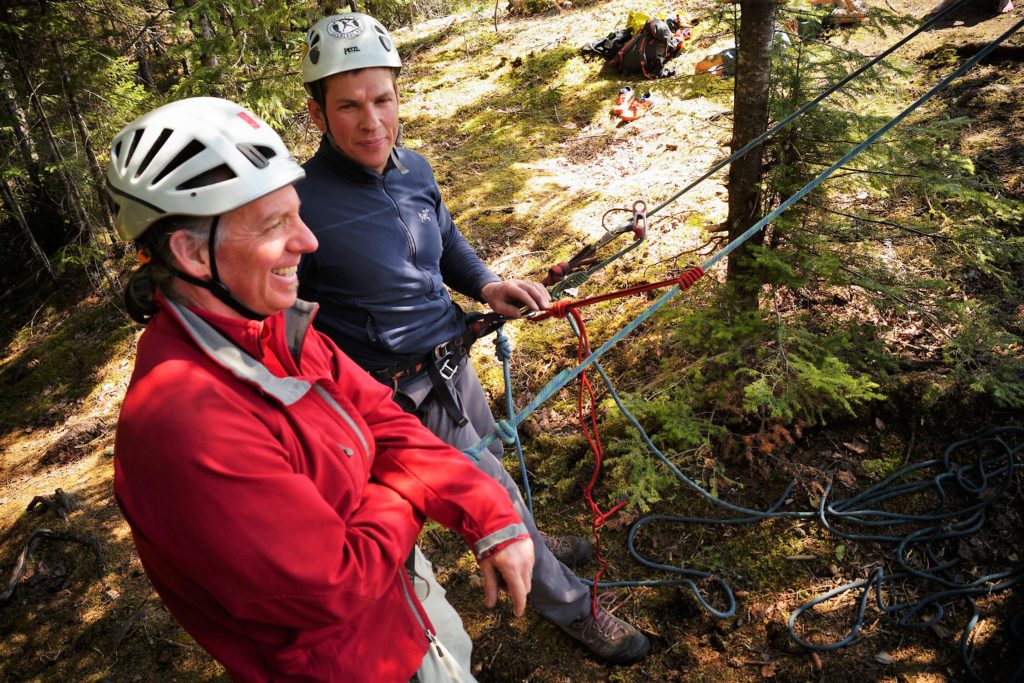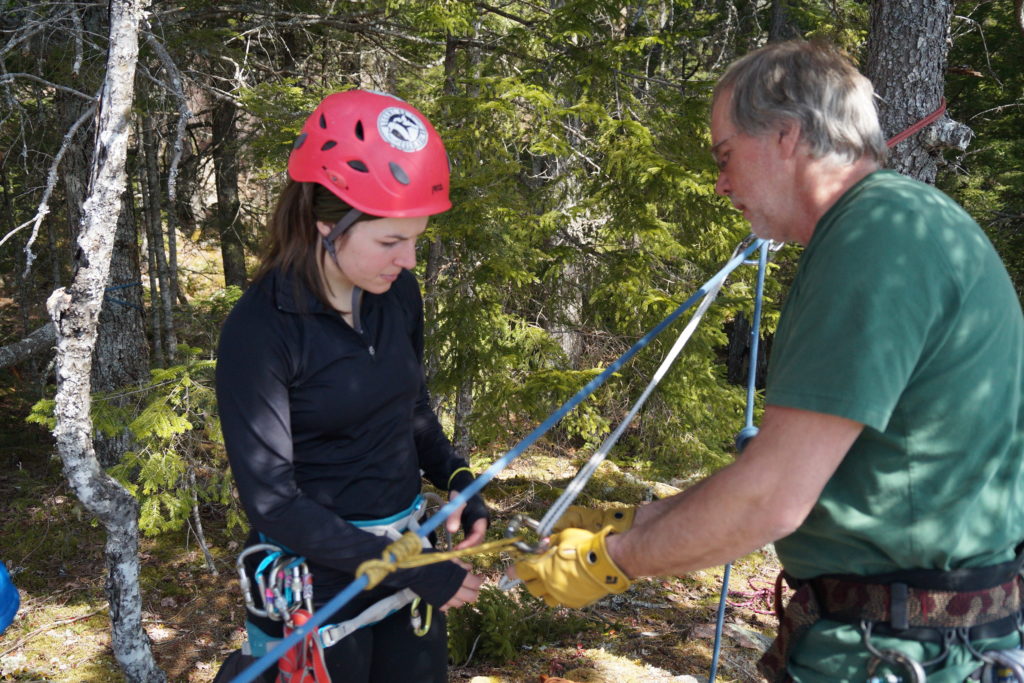Course filled for May 4-5th 2019
Check back in Early Spring 2020
Level I & II Course
This two part course will make you aware of a number of crucial techniques to either avoid or more easily deal with situations involving climber rescue; e.g., your leader or your second is injured and there is not enough rope to be lowered... now what?
The Level I course (day one) is designed to teach fundamental self-rescue techniques to rock climbers. The Level II course (day two) reinforces Level I techniques under more complicated rescue situations with focus on improvisation. See skills covered for each Level below. We generally combine these courses into one solid weekend of self-rescue training.
When: May 4-5th, 2019
Where: McQuirks Mountain; both days; camping Saturday night. If weather looks bad, we have Base Gagetown climbing facility booked.
Cost: $150/person for both Level I & II (you must be, or become, an Ascent NB member)
- $100 for only Saturday (SR level I) if you just can’t make level 2 on Sunday
- Money collected will be 100% used for buying rope rescue equipment for NB climbing areas
- Preference will be given to those that sign up for both Levels because we teach them back to back on the same weekend.
Instructors: Greg Hughes, Shawn Bethune, Chris Hennigar, Joe Kennedy, Steve Adamson, and others TBD
Prerequisites: See below.
Sign up: Email Chris Hennigar; first come first serve; 15 participants max.
Self-Rescue Program
(Saturday)
- Knots: Improved Prusik, Munter Hitch, Munter Mule Overhand (MMO), Improved Prusik MMO (PMMO), Autoblock, Klemheist, Offset Overhand Bend (aka european death knot - EDK)
- Proper use of offset overhand bend and water knot, and where use of these knots should be avoided.
- Ascend and descend a fixed line.
- Belay escape: transfer leader load to ground anchor & rescue cord, transfer load back to baseline.
- Lowering a second on an auto-locking belay device. including use of the Load Strand Redirect (LSD) method in a variety of lowering situations.
- Haul systems: 3:1, 5:1, mechanical advantage theory.
(Sunday)
- Passing a knot on lower and on rappel
- Tandem & counterbalance rappel
- Reinforcement of belay escape and other Level I techniques
- Improvisation (mariner’s knot and other useful tricks)
- Discussion of common mistakes and proactive strategies to avoid bad situations.
Prerequisites
Participants must be 19 years or older, be (or become) a member of Ascent NB, and meet experience and personal gear requirements outlined in prerequisites below to participate.
Minimum experience required
- Basic belay & rappel with an ATC or equivalent.
- Knots: figure-8 series (rethreaded, on a bight, bend), overhand series (on a bight, European Death Knot [EDK]), clove hitch, double fisherman
- Basic anchor experience (from bolts or tree).
- Lead climbing experience not required.
Minimum gear required
- Helmet, harness, auto-lock belay device (e.g., Black Diamond ATC Guide, Petzl Reverso, DMM Pivot)
- Dynamic climbing rope (9-10mm, 60m+; bring it if you have it; one rope per two participants; inquire if you need one).
- Carabiners:
- Four-six small locking carabiners and a few non-locking carabiners
- One large pear-shaped (HMS) carabiner like the Petzl Williams would be good to have
- Two medium pear-shaped (HMS) carabiners with round bar stock such as the Petzl Hera Attache would be good to have
- Cord & slings:
- Rescue cord (about 15-16 feet untied of 6 mm cord)
- One prusik (6mm cord, 5 feet untied) or equivalent (e.g., Sterling hollow block)
- Two 120 cm sewn slings
- Anchor cord: two 120 cm sewn slings or one 240 cm sewn sling or 7 mm cord (240 cm tied).



